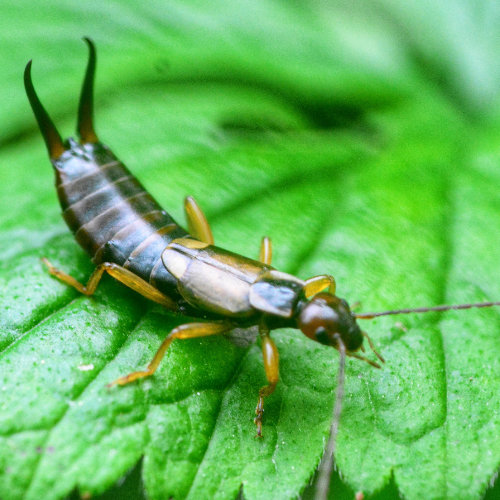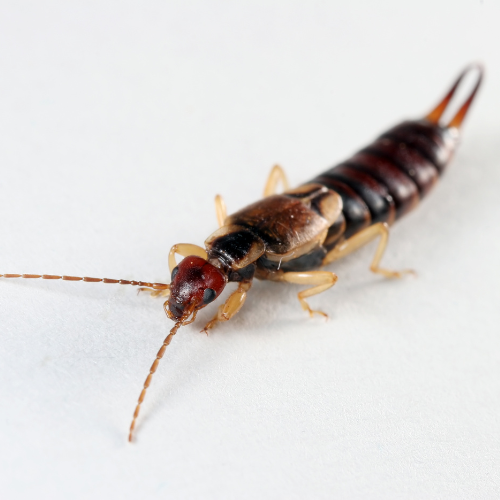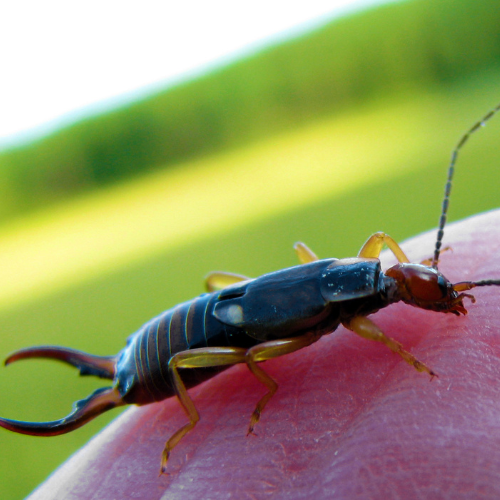Earwigs
Introduction to
Earwigs are common household and garden insects known for their distinctive pincers and nocturnal habits. While they are often feared due to myths and their intimidating appearance, earwigs are generally harmless to humans. This guide provides detailed information on how to recognize, understand, and manage earwigs, including preventive measures and professional pest control solutions.
Recognition
Earwigs are easily recognizable by their elongated bodies and the pair of forceps-like pincers (cerci) on their abdomens. Adult earwigs are typically dark brown to black and range from 1/4 to 1 inch in length. They have two pairs of wings, although they rarely fly. The pincers are more curved in males and straighter in females. Nymphs, or immature earwigs, look like smaller versions of the adults but lack fully developed wings. Earwigs are often found in damp, dark environments such as under rocks, logs, mulch, and leaf litter.
Biology
Earwigs belong to the order Dermaptera and undergo incomplete metamorphosis, developing from eggs to nymphs to adults. Female earwigs lay their eggs in soil or organic debris and are known for their maternal care, guarding the eggs until they hatch. The nymphs go through several molts before reaching adulthood. Earwigs are omnivorous and feed on a variety of plant material, insects, and organic debris. They use their pincers for defense and capturing prey, but they are not harmful to humans. Despite their fearsome appearance, earwigs are generally beneficial in the garden as they help control pest populations.
Habits
Earwigs are nocturnal and prefer moist, dark environments. During the day, they hide in cracks, crevices, and other sheltered locations. At night, they come out to feed on decaying plant material, live and dead insects, and occasionally garden plants. Earwigs are attracted to light, which is why they are often found near outdoor lighting and windowsills. While they do not cause significant damage indoors, their presence can be unsettling. Outdoors, they can sometimes cause minor damage to plants, especially seedlings and soft fruits.
Prevention
Preventing earwig infestations involves reducing moisture and eliminating hiding places. Use dehumidifiers in damp areas like basements and bathrooms. Seal cracks and gaps around doors, windows, and foundations to prevent earwigs from entering. Remove debris, leaf litter, and excess vegetation around the home’s exterior to reduce outdoor harborage areas. Ensure that gutters and downspouts direct water away from the house to keep the foundation dry. Regularly inspect and maintain outdoor lighting fixtures to minimize their attraction to earwigs.
Professional
When earwigs become a persistent problem, professional pest control services can provide effective solutions. STL Pest Control offers comprehensive inspections and customized treatment plans to address earwig infestations. Their methods include moisture control recommendations, sealing entry points, and targeted treatments to eliminate existing earwigs. Professional services ensure that the infestation is managed efficiently and safely, reducing the inconvenience and potential distress caused by these pests.



Our Office









